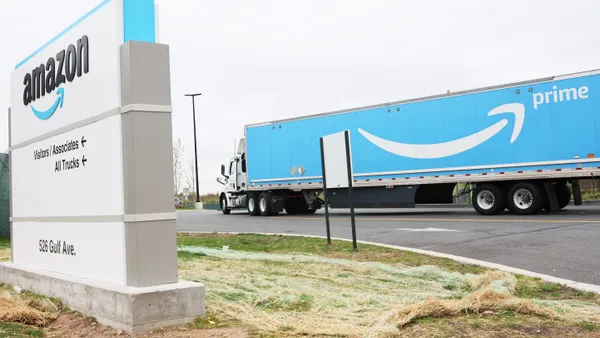Dive Brief:
- KeepTruckin, a fleet management and ELD solutions provider, announced the launch of a new feature called Facility Insights to help truckers minimize time spent waiting in traffic at ports and warehouses, according to a recent press release.
- The feature is available through the company's app-based electronic logging service and by pulling data from its network of more than 250,000 trucks and 55,000 carriers, Facility Insights can estimate average dwell times at various locations. This allows fleet managers and drivers to plan ahead and avoid unexpected delays.
- The company cites links between dwell times and unsafe driver behavior as a key risk the new feature could help address. "Even a 15-minute increase in dwell time raises the likelihood a driver will be involved in a crash by 6.2%," the company said, citing a report from the Office of the Inspector General at the U.S. Department of Transportation.
Dive Insight:
"Detention time is an unnecessary expense that costs the trucking industry over $3 billion a year. Unpredictable delays result in a chain reaction of late pick-ups and drop-offs that can throw off a dispatch schedule for days," Jai Ranganathan, VP of product at KeepTruckin, said in the release.
Furthermore, lengthy dwell times have caused driver frustration when they impact their hours of service (HOS) limits for a shift. The lengthy waits can negatively affect wages and cause negative experiences for shippers relying on on-time deliveries.
For this reason, Uber Freight, Coyote Logistics and other fleet management and freight booking platforms are beginning to incorporate facility-rating features into their products, crowdsourcing data from drivers. Uber executives in particular hope this can help drivers get around unpaid dwell times and identify "problem warehouses" where trucks frequently end up detained for long periods of time.
The increased transparency for fleet managers, drivers and shippers could also come in handy as the Federal Motor Carrier Safety Administration (FMCSA) considers changes to HOS regulations, allowing drivers more scheduling flexibility.
In addition, as analysts warn the industry could be heading for a recession, carriers are encountering soft demand and excess capacity. Time spent idling in line at cargo facilities represents extra costs to drivers, carriers and shippers that all parties could be especially looking to avoid as economic uncertainty looms.














